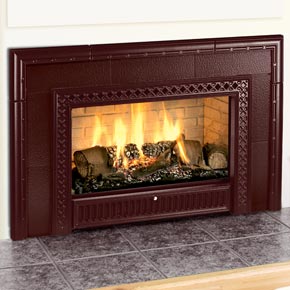 Many people are interested in converting a wood fireplace to gas. This winter, fireplaces have had quite a workout, but some homeowners are tired of lugging and stacking wood. They are interested in replacing the open fireplace with a gas fireplace. But, what does that entail?
Many people are interested in converting a wood fireplace to gas. This winter, fireplaces have had quite a workout, but some homeowners are tired of lugging and stacking wood. They are interested in replacing the open fireplace with a gas fireplace. But, what does that entail?
A gas fireplace is easy to use and maintain. That's why so many people seem to prefer gas fireplace inserts these days.
Chimney inspection
It's important to be certain your chimney is clean and fully functional. A professional chimney sweep will give you an inspection and can tell you whether your chimney will accommodate a gas unit.
You'll also need to hire someone to extend your home's existing gas line to the fireplace. Plumbers and HVAC technicians are often qualified. If your home doesn't have a natural gas connection, and service is available where you live, you can pay for a connection.
Choose a gas insert or gas logs
Next, decide what kind of gas fireplace insert you want. When converting from a wood-burning fireplace, you have three options:
- a gas fireplace insert
- vented gas logs
- vent-free gas logs
To choose, consider how you expect to use your fireplace.
If you want to add warmth to your home, consider a gas insert or vent-free gas logs. Of these two options, vent-free gas logs produce the most heat, but they may introduce unburned combustion products into your home and aren't recommended for homeowners with allergies or asthma. Also, some municipalities have restricted or outlawed vent-free fireplaces.
Vented gags logs are your best option if you don't care about adding heat, don't plan to use the fireplace often or are mostly interested in how the fire looks. Vented gas-log fireplaces burn more gas than the other types and may draw heat up the chimney, but they cost less to install than a gas insert.
For more information on the best choice for your home and your lifestyle, contact West Sport in Sudbury.

Comments
{tag_commentlist}